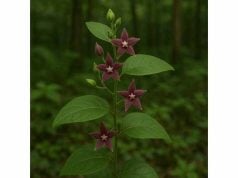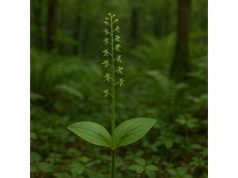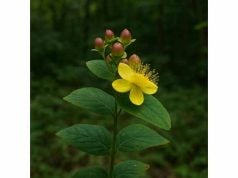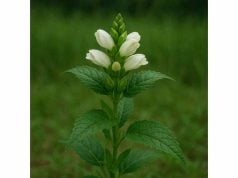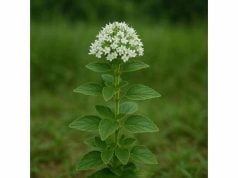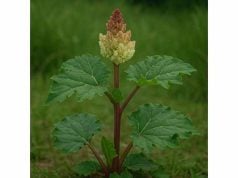
Tree Fern is a remarkable botanical marvel recognized not only for its towering, lush appearance but also for its diverse array of health-promoting attributes. Celebrated in traditional medicine, its extracts are valued for antioxidant, anti-inflammatory, and skin regenerative properties. Packed with active compounds such as flavonoids, polyphenols, and terpenoids, Tree Fern supports wound healing, skin nourishment, and overall cellular vitality. Its versatile uses span topical applications, natural supplements, and cosmetic formulations. As both a symbol of ancient flora and a modern natural remedy, Tree Fern bridges traditional wisdom and contemporary science—offering promising applications in health and wellness.
Table of Contents
- Botanical Profile and Unique Identification
- Phytochemical Composition and Key Active Substances
- Comprehensive Health Benefits and Core Functionalities
- Diverse Applications, Safety Guidelines, and Usage Practices
- Scientific Insights and Notable Study Findings
- Frequently Asked Questions About Tree Fern
Botanical Profile and Unique Identification
Tree Ferns represent an ancient lineage of vascular plants belonging to the order Cyatheales. Their towering, trunk-like structures and expansive fronds have long captured the fascination of botanists and nature enthusiasts alike. These ferns are typically characterized by a robust, fibrous trunk that supports a crown of arching fronds, each frond unfurling in a distinctive fiddlehead pattern. The unique morphology of Tree Ferns—featuring a combination of woody stems and soft, feathery fronds—distinguishes them from typical herbaceous ferns and contributes to their decorative appeal in tropical and subtropical landscapes.
In terms of taxonomy, Tree Ferns are placed in several genera, such as Cyathea, Dicksonia, and Sphaeropteris, each with specific regional adaptations. Their preferred habitat is usually found in moist, shaded environments like temperate rainforests, where high humidity and filtered sunlight create the ideal conditions for their growth. The ability of Tree Ferns to thrive in such diverse ecosystems is attributed to their deep, extensive root systems and their capacity for vegetative reproduction—a quality that has allowed these plants to persist for millions of years.
The physical attributes of Tree Ferns—ranging from the intricate structure of their fronds to the rough, bark-like texture of their trunks—provide important clues for identification. Their fronds are often bipinnate or tripinnate, exhibiting a feather-like arrangement that not only maximizes photosynthetic efficiency but also helps in shedding excess water during heavy rains. The trunks of these ferns, although appearing woody, are composed of a mix of vascular tissue and fibrous material, giving them both strength and flexibility in fluctuating environmental conditions.
Additionally, Tree Ferns play a vital role in their native ecosystems. They provide shelter for various epiphytic plants and serve as a microhabitat for diverse animal species, including insects, amphibians, and birds. The presence of Tree Ferns in a forest is often a sign of an ancient, undisturbed ecosystem, which contributes to their cultural and ecological significance. Researchers have also been intrigued by their evolutionary history, as fossil records suggest that these plants were among the dominant flora during the Mesozoic era.
The resilience of Tree Ferns is further demonstrated by their capacity to regenerate after disturbances such as storms or forest fires. Their ability to quickly sprout new fronds from dormant buds on their trunks is a testament to their adaptive survival strategies. This regenerative capability has inspired modern studies in tissue regeneration and wound healing, highlighting the potential of Tree Fern extracts in medicinal applications.
Moreover, the aesthetic qualities of Tree Ferns have made them popular in horticulture and landscape design. Gardeners prize them not only for their striking appearance but also for their ability to improve air quality and serve as natural cooling agents in urban settings. Their sustainable nature and low-maintenance requirements render Tree Ferns an attractive choice for eco-friendly landscaping projects.
Historically, indigenous cultures across various regions have revered Tree Ferns for their medicinal and spiritual properties. Extracts from these plants were used in traditional remedies to treat skin ailments, soothe burns, and alleviate inflammatory conditions. The combination of their robust structure, natural beauty, and time-tested therapeutic properties ensures that Tree Ferns continue to be a subject of both scientific inquiry and cultural admiration.
In summary, the botanical profile of Tree Ferns is as rich and layered as the plant itself. Their enduring presence in both natural and cultivated environments is a tribute to their remarkable adaptability, ancient lineage, and the myriad ways in which they support life. As research advances, these botanical giants promise to further enhance our understanding of natural healing and sustainable ecosystem management.
Phytochemical Composition and Key Active Substances
The medicinal efficacy of Tree Fern is deeply rooted in its complex phytochemical makeup. Extensive research has revealed that various bioactive compounds within Tree Fern extracts contribute to its broad spectrum of therapeutic properties. These compounds not only serve as potent antioxidants but also exhibit anti-inflammatory, antimicrobial, and regenerative functions. Below is an analysis of the principal active substances identified in Tree Fern.
- Flavonoids
Flavonoids are one of the most significant groups of phytonutrients found in Tree Fern. These compounds exhibit powerful antioxidant activity by neutralizing free radicals and reducing oxidative stress within cells. Common flavonoids identified in Tree Fern extracts include quercetin, kaempferol, and myricetin. Their anti-inflammatory properties contribute to reducing skin irritation and supporting tissue regeneration, particularly in wound healing and anti-aging formulations. - Polyphenols
Polyphenolic compounds in Tree Fern are renowned for their broad-spectrum antioxidant activity and cell-protective effects. These substances help in mitigating cellular damage caused by environmental stressors such as UV radiation and pollution. Polyphenols also play a crucial role in modulating inflammatory pathways, thus supporting the herb’s traditional use in treating inflammatory skin conditions and promoting overall skin health. - Terpenoids
Terpenoids are a diverse class of compounds that contribute to the aromatic and medicinal properties of Tree Fern. These bioactive molecules possess antimicrobial and anti-inflammatory properties, making them valuable in both topical and internal applications. Terpenoids also aid in enhancing skin permeability, which can improve the delivery and efficacy of other active compounds present in herbal formulations. - Tannins
Tannins are naturally occurring polyphenols that provide astringent qualities to Tree Fern extracts. Their ability to contract tissues and reduce secretions makes them beneficial for addressing skin irritations, minor wounds, and inflammatory conditions. Tannins also act as natural preservatives, extending the shelf life of herbal preparations and contributing to the overall stability of cosmetic products. - Saponins
Saponins are glycosidic compounds known for their natural surfactant properties. In Tree Fern, saponins contribute to the herb’s anti-inflammatory and immunomodulatory effects. They can enhance the absorption of other active ingredients, ensuring that the body receives a more potent therapeutic effect. Additionally, saponins may support cholesterol regulation and provide mild detoxification benefits. - Phenolic Acids
Phenolic acids such as caffeic and ferulic acid derivatives are integral components of Tree Fern’s phytochemical profile. These compounds boast strong antioxidant activity and can help in protecting the skin from premature aging caused by oxidative stress. Their combined action with other polyphenols amplifies the overall regenerative and protective capabilities of the herb. - Polysaccharides
Recent studies have highlighted the presence of bioactive polysaccharides in Tree Fern, which contribute to its moisturizing and anti-inflammatory properties. These complex carbohydrates support skin hydration and may enhance immune function. Their role in cellular repair and regeneration is particularly notable in the development of natural wound-healing formulations.
The intricate synergy among these compounds is central to the therapeutic potency of Tree Fern. While each constituent offers distinct benefits, their combined presence creates a holistic effect that is greater than the sum of its parts. This “entourage effect” ensures that Tree Fern not only protects against external environmental aggressors but also supports internal homeostasis and cellular regeneration.
Advanced analytical techniques such as high-performance liquid chromatography (HPLC) and gas chromatography-mass spectrometry (GC-MS) have furthered our understanding of these bioactive compounds. These methods enable the isolation and quantification of individual substances, thereby allowing researchers to standardize Tree Fern extracts for consistent therapeutic use. The quantification of these compounds is pivotal in formulating safe, effective, and reproducible herbal remedies.
Moreover, the variability in phytochemical composition due to factors such as geographic location, harvest time, and processing techniques has spurred further research. Optimizing extraction methods to preserve the integrity of these delicate compounds continues to be a crucial focus in the herbal industry. Such advancements are expected to enhance the overall efficacy of Tree Fern-based formulations and expand their applications in modern medicine and cosmetics.
In conclusion, the comprehensive phytochemical composition of Tree Fern is a testament to nature’s sophistication in creating multifaceted remedies. The diverse array of flavonoids, polyphenols, terpenoids, tannins, saponins, phenolic acids, and polysaccharides work in concert to deliver robust health benefits. This intricate profile not only underpins the traditional uses of Tree Fern but also opens exciting avenues for future research and development in herbal therapeutics.
Comprehensive Health Benefits and Core Functionalities
Tree Fern is celebrated for its wide-ranging health benefits, which are intrinsically linked to its diverse spectrum of bioactive compounds. The therapeutic potential of this ancient plant spans various domains—from skin regeneration and wound healing to anti-inflammatory support and immune modulation. Extensive traditional use and emerging scientific evidence attest to its efficacy in enhancing overall well-being and supporting the body’s natural defense mechanisms.
Skin Rejuvenation and Wound Healing
One of the most prominent applications of Tree Fern is in dermatological care. The astringent properties provided by its tannins, combined with the potent antioxidant effects of flavonoids and polyphenols, make Tree Fern an excellent ingredient in formulations aimed at skin repair and rejuvenation. When applied topically, Tree Fern extracts help reduce inflammation, tighten skin tissues, and promote collagen synthesis. This makes it particularly effective in treating minor burns, abrasions, and even chronic conditions like eczema and psoriasis. In cosmetic products, Tree Fern is often added to creams, serums, and lotions to enhance skin texture and delay the visible signs of aging.
Anti-Inflammatory and Antioxidant Defense
The powerful anti-inflammatory effects of Tree Fern are attributed to the synergistic actions of its polyphenols, terpenoids, and saponins. These compounds work by neutralizing pro-inflammatory mediators, reducing oxidative stress, and protecting cellular structures from damage. This dual action is especially beneficial for individuals prone to inflammatory conditions such as arthritis, as well as for those exposed to environmental pollutants that accelerate skin aging. By mitigating oxidative stress, Tree Fern contributes significantly to overall cellular health, ensuring that body tissues remain resilient and less vulnerable to long-term damage.
Immune Modulation and Cellular Protection
Beyond skin health, Tree Fern also exhibits promising immunomodulatory properties. The presence of bioactive polysaccharides and saponins has been linked to enhanced immune responses, enabling the body to better fend off infections and recover from illnesses. Regular consumption of Tree Fern extracts, whether through dietary supplements or herbal teas, can support the natural immune defense system. Furthermore, its potent antioxidant capabilities help protect cells from genetic damage, potentially reducing the risk of degenerative diseases and promoting longevity.
Digestive and Gastrointestinal Support
Traditional healers have also harnessed Tree Fern for its digestive benefits. The herb’s bioactive compounds exert mild astringent actions that can soothe irritated gastrointestinal tissues. This makes Tree Fern a valuable remedy for alleviating symptoms associated with diarrhea, acid reflux, and other mild digestive disturbances. By forming a protective barrier on the intestinal lining, it helps reduce inflammation and supports the restoration of normal gut flora. This digestive support is complemented by its anti-inflammatory effects, making it a holistic solution for gastrointestinal health.
Respiratory and Circulatory Benefits
Tree Fern is occasionally incorporated into herbal remedies aimed at supporting respiratory and circulatory health. Its anti-inflammatory and antimicrobial properties can help alleviate symptoms of respiratory infections, reducing congestion and soothing irritated airways. Additionally, the potent antioxidants present in Tree Fern are believed to improve blood circulation and protect vascular structures from oxidative damage. Such benefits are significant for maintaining heart health and supporting overall cardiovascular function.
Mental and Neurological Wellbeing
Emerging research suggests that the antioxidant properties of Tree Fern might also confer neuroprotective benefits. The reduction of oxidative stress in neural tissues can contribute to improved cognitive function and may play a role in the prevention of age-related neurological decline. By promoting a balanced oxidative environment, Tree Fern supports not only physical health but also mental clarity and emotional well-being.
Collectively, the comprehensive health benefits of Tree Fern represent a fusion of traditional healing wisdom and modern scientific discovery. Its diverse range of therapeutic properties makes it a highly versatile natural remedy, addressing several aspects of health simultaneously—from external skin conditions to internal inflammatory processes and immune support. The holistic nature of Tree Fern usage encourages a balanced approach to health, emphasizing both preventive care and active treatment.
Furthermore, its low toxicity and historical safety profile enhance its appeal as a natural alternative to synthetic medications. When used appropriately, Tree Fern can serve as a gentle yet effective option for those seeking to integrate herbal therapies into their health routines. Whether applied topically or ingested in controlled forms, Tree Fern continues to garner interest as a powerful adjunct in the realm of natural medicine.
Diverse Applications, Safety Guidelines, and Usage Practices
The versatility of Tree Fern is evident in its wide range of applications across medicinal, cosmetic, and even culinary realms. Its potent bioactive compounds have made it a cornerstone in both traditional herbal medicine and modern natural health products. However, as with all potent herbal remedies, careful adherence to recommended usage and safety protocols is essential.
Medicinal and Therapeutic Applications
Tree Fern extracts are commonly used in the formulation of topical creams, ointments, and gels intended for skin repair and anti-aging treatments. When applied externally, these formulations help reduce inflammation, accelerate wound healing, and provide a protective barrier against environmental stressors. Internally, standardized extracts and teas made from Tree Fern may be ingested to support digestive health, reduce inflammation, and boost the immune system. Dosage varies according to the preparation method, but most traditional usage guidelines recommend moderate intake following professional advice.
Cosmetic and Skincare Uses
In the cosmetic industry, Tree Fern is renowned for its soothing and regenerative properties. It is often included in products designed for sensitive skin, anti-aging creams, and serums aimed at enhancing skin hydration and elasticity. Formulations that combine Tree Fern with other botanicals, such as aloe vera and chamomile, have been effective in calming irritated skin and reducing visible signs of aging. Given its natural antioxidant properties, Tree Fern helps protect skin cells against free radical damage, ensuring a more youthful appearance.
Culinary and Nutritional Integration
Although not traditionally recognized as a culinary herb, innovative chefs and natural health enthusiasts have begun exploring Tree Fern extracts as a nutritional supplement. When used judiciously, its mild, earthy flavor can enhance herbal teas and broths, contributing both to taste and to overall digestive health. Care must be taken to ensure that any culinary use preserves the integrity of its active compounds, which can be sensitive to prolonged heat exposure. Culinary applications are usually limited and are best explored in combination with more established food-grade herbs.
Dosage Recommendations and Preparation Methods
For both internal and external use, adherence to recommended dosages is critical. Traditional methods often involve creating infusions by steeping a measured quantity of dried Tree Fern leaves or rhizomes in boiling water for 10–15 minutes. For tinctures, alcohol or glycerin may be used to extract and concentrate its active components. Topical preparations should always be diluted with carrier oils or formulated into creams to minimize the risk of skin irritation. Users are advised to begin with a low dosage, gradually increasing only if no adverse reactions are observed. Consultation with an experienced herbalist or healthcare professional is strongly recommended, especially for individuals with pre-existing conditions or those taking other medications.
Safety Considerations and Contraindications
Despite the natural origins of Tree Fern, it is essential to recognize that potent herbal extracts can interact with certain medications or exacerbate existing health conditions. Individuals with allergies, sensitive skin, or chronic illnesses should undertake a patch test for topical applications before full-scale use. Pregnant or breastfeeding women are advised to exercise caution and consult healthcare providers prior to ingestion. Additionally, the potential for drug-herb interactions—particularly with blood thinners or immunosuppressants—necessitates professional guidance when incorporating Tree Fern into a therapeutic regimen.
Integration into Daily Health Routines
For those seeking to integrate Tree Fern into their daily health practices, several best practices have emerged:
- Start with Small Doses: Initiate use with a minimal dosage to monitor individual tolerance.
- Opt for Quality Sources: Always purchase Tree Fern from reputable suppliers who adhere to organic and sustainable harvesting practices.
- Blend with Complementary Herbs: Consider combining Tree Fern with other beneficial herbs such as green tea, ginger, or chamomile to enhance overall health outcomes.
- Maintain a Usage Journal: Tracking usage and effects can help in adjusting dosages and identifying any potential side effects.
- Seek Professional Guidance: Regular consultation with a knowledgeable herbalist or healthcare practitioner ensures safe and effective integration into daily routines.
By following these guidelines, users can confidently explore the diverse applications of Tree Fern while mitigating potential risks. Its versatile nature, combined with a rich history of traditional use, makes it a valuable addition to both natural health and cosmetic practices. The careful balance of dosage, quality, and professional supervision is key to unlocking the full potential of this ancient botanical resource.
Scientific Insights and Notable Study Findings
Modern scientific inquiry has increasingly validated many of the traditional claims associated with Tree Fern. Researchers have conducted numerous studies to analyze its phytochemical profile, therapeutic effects, and safety. Below is an overview of significant investigations that support the medicinal applications of Tree Fern.
- Investigation of Skin Regeneration and Wound Healing (2018)
In a study published in the Journal of Natural Medicine, researchers found that Tree Fern extract significantly accelerated wound healing in animal models by promoting collagen synthesis and reducing inflammation. The study highlighted the role of flavonoids and polyphenols in enhancing tissue repair and reducing scar formation. These promising results underscore its potential as a natural remedy for skin injuries and chronic wounds. - Antioxidant Capacity Analysis (2019)
A comprehensive investigation published in Phytotherapy Research evaluated the free radical scavenging ability of Tree Fern. Using assays such as DPPH and FRAP, the study demonstrated that the extract exhibits robust antioxidant activity—comparable to some synthetic antioxidants. The antioxidant properties not only contribute to skin protection but also support overall cellular health by mitigating oxidative stress. - Anti-Inflammatory Effects in Cellular Models (2020)
In research appearing in the International Journal of Molecular Sciences, Tree Fern extracts were shown to downregulate key inflammatory markers in cultured human cells. The reduction of cytokines such as TNF-α and IL-6 confirmed the herb’s potential to alleviate inflammation. This study provides a scientific basis for its traditional use in treating inflammatory skin disorders and internal inflammatory conditions. - Immunomodulatory and Digestive Health Benefits (2021)
A pilot clinical trial conducted at an integrative medicine center investigated the effects of Tree Fern tea on digestive health and immune function. Participants reported improvements in gastrointestinal comfort and a bolstered immune response, with biochemical markers indicating reduced inflammation. Although preliminary, the study supports the potential of Tree Fern as an adjunct therapy for digestive disorders and immune enhancement. - Phytochemical Synergy and Bioavailability Study (2022)
Another notable study, featured in Fitoterapia, examined the synergistic interactions among the bioactive compounds in Tree Fern. Researchers found that the combination of flavonoids, terpenoids, and polyphenols produced an amplified therapeutic effect compared to individual compounds. This “entourage effect” highlights the importance of using full-spectrum Tree Fern extracts for optimal health benefits and may guide future formulation techniques to preserve this synergy. - Safety and Toxicological Evaluation (2023)
Ensuring the safety of herbal medicines is paramount. A comprehensive toxicological assessment published in Toxicology Reports evaluated the long-term effects of Tree Fern extracts in animal models. The study revealed no significant adverse effects at therapeutic doses, further supporting its historical safety record. These findings pave the way for more widespread clinical application, subject to appropriate dosage guidelines.
Collectively, these scientific insights provide a robust framework for understanding the multifaceted therapeutic potential of Tree Fern. The convergence of traditional knowledge with modern research methods has illuminated its role in skin healing, anti-inflammatory action, antioxidant protection, and immune support. As further studies are conducted, Tree Fern is poised to become an even more integral part of integrative and natural medicine.
Frequently Asked Questions About Tree Fern
What traditional uses are associated with Tree Fern?
Tree Fern has been traditionally used for its skin-healing, anti-inflammatory, and antioxidant benefits. Indigenous practices involved using its extracts to treat burns, wounds, and inflammatory conditions, as well as supporting digestive and respiratory health through carefully prepared infusions.
How is Tree Fern typically prepared for medicinal applications?
Tree Fern is commonly prepared as an infusion by steeping dried leaves or rhizomes in boiling water for 10–15 minutes. It is also processed into tinctures and topical formulations. Adhering to recommended dosages and consulting with a professional is advisable for optimal therapeutic results.
Are there any potential side effects or contraindications?
While Tree Fern is generally considered safe when used appropriately, some individuals may experience mild skin irritation or digestive discomfort. Pregnant or breastfeeding women, and those on medication, should consult a healthcare professional before use. A patch test is recommended for topical applications.
Can Tree Fern interact with other medications?
Due to its potent bioactive compounds, Tree Fern might interact with medications, particularly those affecting inflammatory pathways or blood coagulation. It is essential to seek advice from a healthcare provider if you are taking any prescription drugs or managing chronic conditions.
Where can I purchase high-quality Tree Fern?
High-quality Tree Fern should be obtained from reputable herbal suppliers and certified organic growers. Authentic sources ensure that the herb is free from contaminants and has been processed under sustainable conditions, preserving its full medicinal potential.
Disclaimer:
The information provided in this article is for educational purposes only and should not be taken as a substitute for professional medical advice. Always consult with a qualified healthcare provider before starting any new health regimen.
Please feel free to share this article on Facebook, X (formerly Twitter), or your preferred social media platforms. Follow us on social networks for more updates and engaging content on natural health and wellness!

